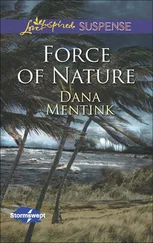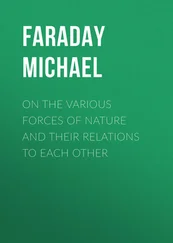C. Box - Force of Nature
Здесь есть возможность читать онлайн «C. Box - Force of Nature» весь текст электронной книги совершенно бесплатно (целиком полную версию без сокращений). В некоторых случаях можно слушать аудио, скачать через торрент в формате fb2 и присутствует краткое содержание. Жанр: Триллер, на английском языке. Описание произведения, (предисловие) а так же отзывы посетителей доступны на портале библиотеки ЛибКат.
- Название:Force of Nature
- Автор:
- Жанр:
- Год:неизвестен
- ISBN:нет данных
- Рейтинг книги:5 / 5. Голосов: 1
-
Избранное:Добавить в избранное
- Отзывы:
-
Ваша оценка:
- 100
- 1
- 2
- 3
- 4
- 5
Force of Nature: краткое содержание, описание и аннотация
Предлагаем к чтению аннотацию, описание, краткое содержание или предисловие (зависит от того, что написал сам автор книги «Force of Nature»). Если вы не нашли необходимую информацию о книге — напишите в комментариях, мы постараемся отыскать её.
Force of Nature — читать онлайн бесплатно полную книгу (весь текст) целиком
Ниже представлен текст книги, разбитый по страницам. Система сохранения места последней прочитанной страницы, позволяет с удобством читать онлайн бесплатно книгу «Force of Nature», без необходимости каждый раз заново искать на чём Вы остановились. Поставьте закладку, и сможете в любой момент перейти на страницу, на которой закончили чтение.
Интервал:
Закладка:
He climbed back in the Jeep to find Haley sitting up, wide awake. She rubbed her eyes and thanked him for the coffee, and said, “You left off in 1998.”
“Do you really want me to go on?” he said, easing out onto the street. He turned north until it merged onto U.S. Highway 16. One hundred eighty miles until they hit Saddlestring.
“Yes.”
“Are you sure?”
“Yes,” she said. “You said Nemecek came to you with a special assignment.”
In March OF 1998, John Nemecek called Nate Romanowski into his office. The building itself was a small, single-level brick residential bungalow. There was no plaque or sign out front to indicate it was anything other than one home of many at Warren Air Force Base in Cheyenne. Airmen and their families occupied the houses on either side of the bungalow. There were bicycles and wading pools in the yards up and down the street.
“He started out as he usually did,” Nate said to Haley, “with a history lesson. In this case, it was about how important the sport of falconry was to the Arab emirs through time. How falconry was literally the sport of kings in the Arab world, and how it had almost mythical and religious significance. Unlike here, where anyone can become a falconer if they have the time, patience, and desire, in the Arab world only the royals and elite are allowed to participate. Think of it like fox hunting in England in the past-very elitist.
“The pinnacle of falconry in the Arab world is to hunt a rare and endangered bird called the houbara bustard,” Nate said. “These are large birds that mainly stay on the ground, but they’re capable of short flights. Some weigh up to forty-five pounds. They remind me of prairie chickens but bigger and faster. When a falcon takes them on, it’s a wild and violent fight. Bustards live in high, dry country, and they’re all but impossible to get close to because they live where there are no trees. Bustards can see for miles if anyone is coming. The Arabs like to watch the kill through binoculars hundreds of yards away, like generals watching a battle far from the front line. They don’t eat the dead bustard or use it for any purpose. It’s all about the kill.
“To me, their philosophy of falconry is perverse. They hunt their birds for the sake of killing, and it’s done in big social gatherings of the upper crust. They buy raptors from around the world as if they’re racehorses, and the royals gain status by having the most exotic and deadly birds.”
Haley said, “How is that different from your experience?”
“Every falconer I know hunts his birds as a means of getting closer to the primitive world,” Nate said. “It’s a way to become a relevant part of the wild. There’s nothing sweet or Bambi-like about it. It’s not about status or elitism. Most of the falconers I know are barely getting by, because it takes so much time to get good at it. You can choose a family and a career or you can devote your life to falconry. They don’t mix well. The only exception to that I can think of was Nemecek himself. He was able to maintain his falconry while running Mark V. He thought of himself as a royal falconer because of this strange connection he had with his birds, and I really can’t blame him for it.”
While Nemecek detailed the Arab obsession with falcons and falconry, Nate listened patiently and waited for the general outline of the mission ahead. Instead, Nemecek asked him about obtaining young peregrine falcons from the nest.
“At the time,” Nate told Haley, “peregrines were hard to find. They were on the endangered species list, and even though there were plenty in zoos and aviaries, it was illegal to capture the wild birds. Wild birds are what falconers want, not birds raised in captivity. They’re considered to be a much higher prize.
“I knew of a nest-maybe two-in Montana where I grew up, and I told Nemecek about them. He asked me if there were young birds up there, and of course I didn’t know at the time, but I assumed so. Right then, without telling me anything more about the operation or explaining why there were no other team members present, he signed a travel authorization for me to fly up to Great Falls. He told me to go as a civilian, take my climbing gear, and operate under my real name.”
On a thirty-degree spring day under leaden skies, Nate snapped on his climbing harness, threaded the rope, and backed off the edge of a five-hundred-foot cliff overlooking the Missouri River. Beneath him, car-sized plates of ice floated sluggishly with the current of the water and occasionally piled up at river bends. The northern wind was sharp and cold and teared his eyes as he descended.
He rappelled down, feeding rope through the carabiners of his harness, bouncing away from the sheer rock with the balls of his feet. Tightly coiled netting hung from his belt.
It was fifty feet down to the first nest, which filled a large fissure in the cliff face. The next was a huge crosshatching of branches and twigs and dried brush, cemented together by mud, sun, and years. It was well hidden and virtually inaccessible from below, but he’d located it years before by the whitewash of excrement that extended down the granite from the nest, looking like the results of an overturned paint bucket.
As he approached it from above, he noted the layers of building material, from the white and brittle branches on the bottom to the still-green fronds on the top. The nest had been built over generations, and had hosted falcons for forty years. Nate couldn’t determine if all of the inhabitants had been peregrines, but he doubted it. The original nest, he thought, had been built by eagles.
The nest came into view, and Nate prepared for anything. Once he had surprised a female raptor in the act of tearing a rabbit apart for her fledglings and the bird had launched herself into his face, shredding his cheeks with her talons. But there were no mature adults in the nest. Only four downy and awkward fledglings. When they saw him, they screeched and opened their mouths wide, expecting him to give them food.
He guessed by their size that they were two months old, and would be considered eyas, too young to fly. Four young birds in a nest was unusual, he knew, since usually there were just two or three. If taken now, they would need to be immediately hooded and hand-fed until their feathers fully developed, and kept sightless in the dark so they didn’t know who gave them their food. If the birds saw their falconer too early in their fledgling maturity, the falconer would be imprinted for life as the food provider and the birds would never hunt properly or maintain their wild edge. Nate didn’t like taking birds this young, not only because of the work involved but because of the moral question. He no longer wanted to own his birds, preferring instead to partner up with them.
But here they were. So where was Mom? He almost wished she would show up and drive him away. He could claim to Nemecek that the trip had been unsuccessful. But Nate was in a stage of his life where he refused to fail.
He spun himself around, and the landscape opened up as far as he could see. The sun was emerging from a bank of clouds on the eastern horizon and lighting the skeleton cottonwoods below while darkening the S-curves of the river. There were no birds in the sky.
He spun back around, pulled the net from his web belt, and reached inside the nest.
Farther downriver, on another cliff face, he found the second nest. He was surprised to find out it held three more birds. The seven eyas were carefully crated, and Nate drove them to Colorado, where Nemecek maintained his elaborate falconry camp in Poudre Valley near Fort Collins. For the next eleven months, the birds were slowly and carefully brought along by Nemecek and Nate. All seven turned out to be healthy, strong, and wild. All seven turned out to be exquisite killers.
Читать дальшеИнтервал:
Закладка:
Похожие книги на «Force of Nature»
Представляем Вашему вниманию похожие книги на «Force of Nature» списком для выбора. Мы отобрали схожую по названию и смыслу литературу в надежде предоставить читателям больше вариантов отыскать новые, интересные, ещё непрочитанные произведения.
Обсуждение, отзывы о книге «Force of Nature» и просто собственные мнения читателей. Оставьте ваши комментарии, напишите, что Вы думаете о произведении, его смысле или главных героях. Укажите что конкретно понравилось, а что нет, и почему Вы так считаете.












